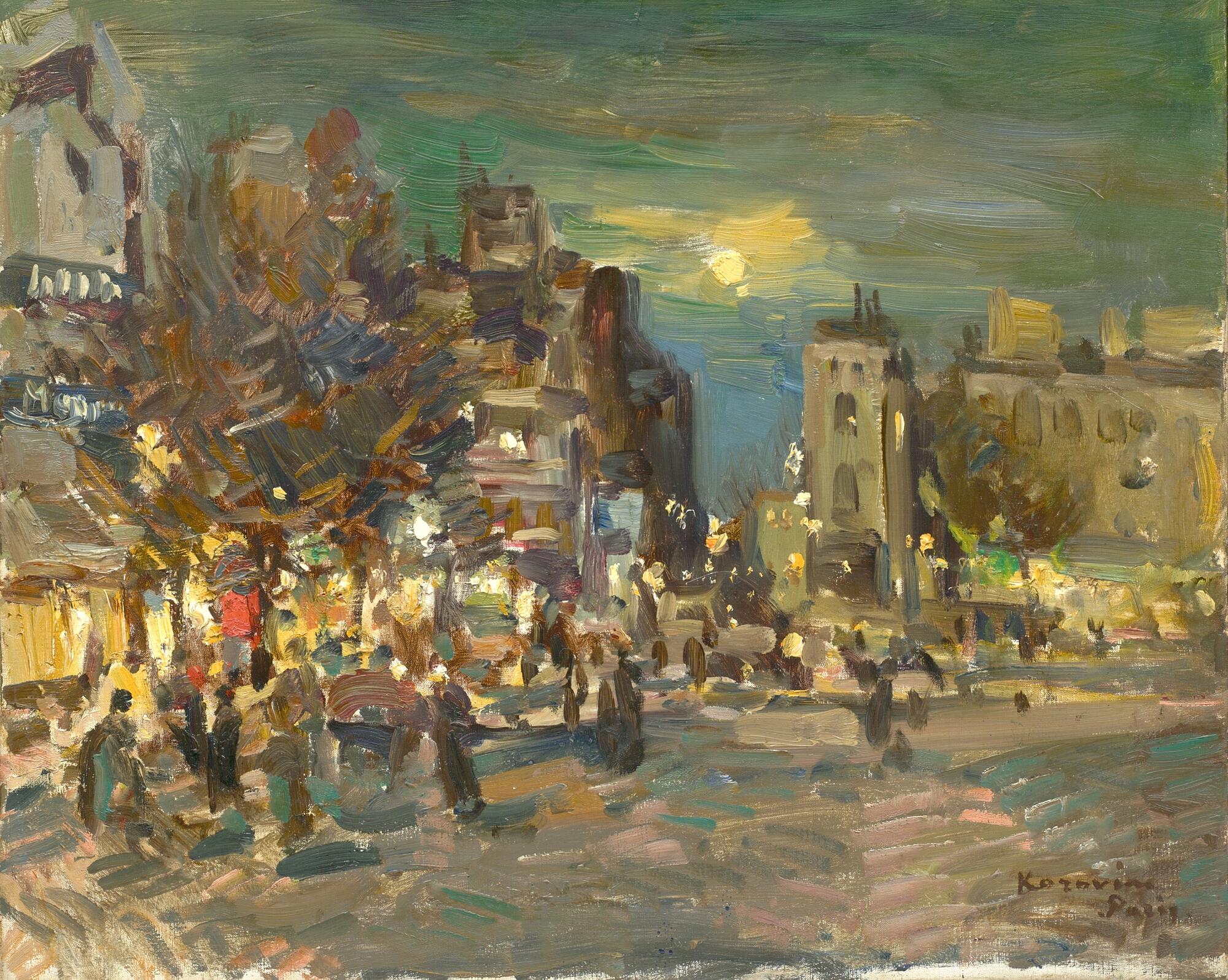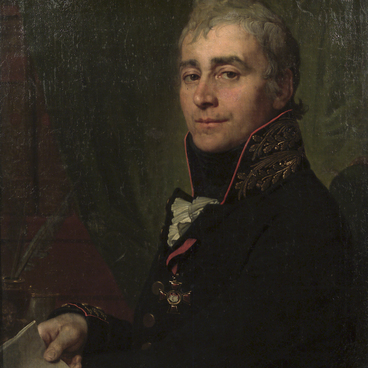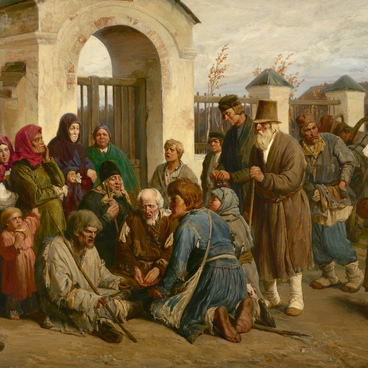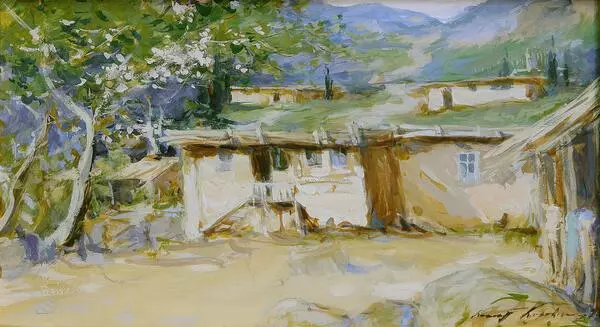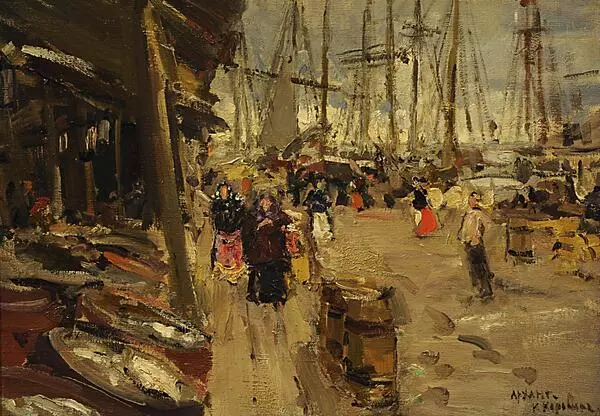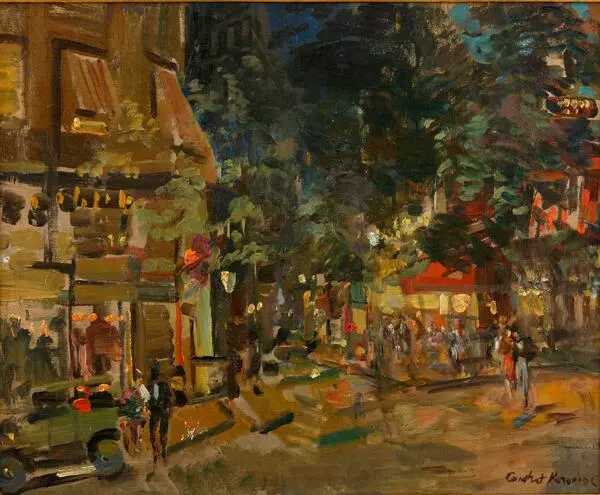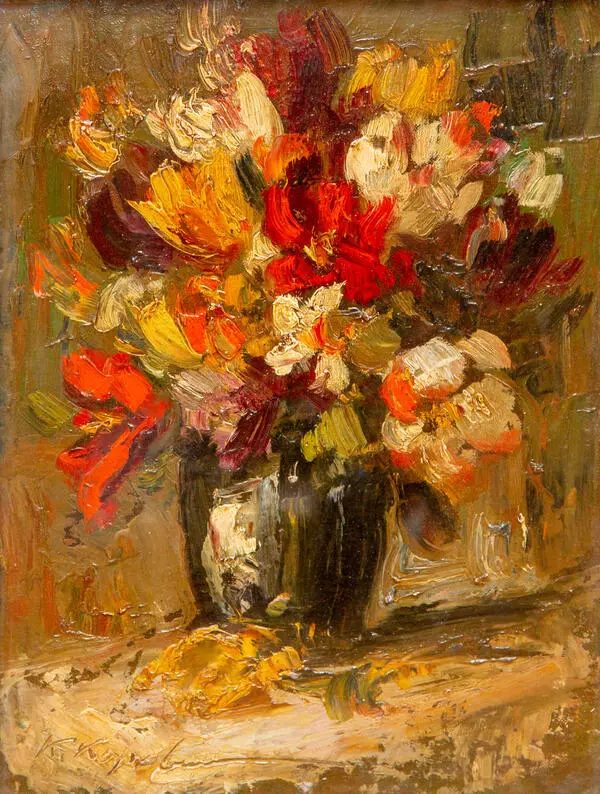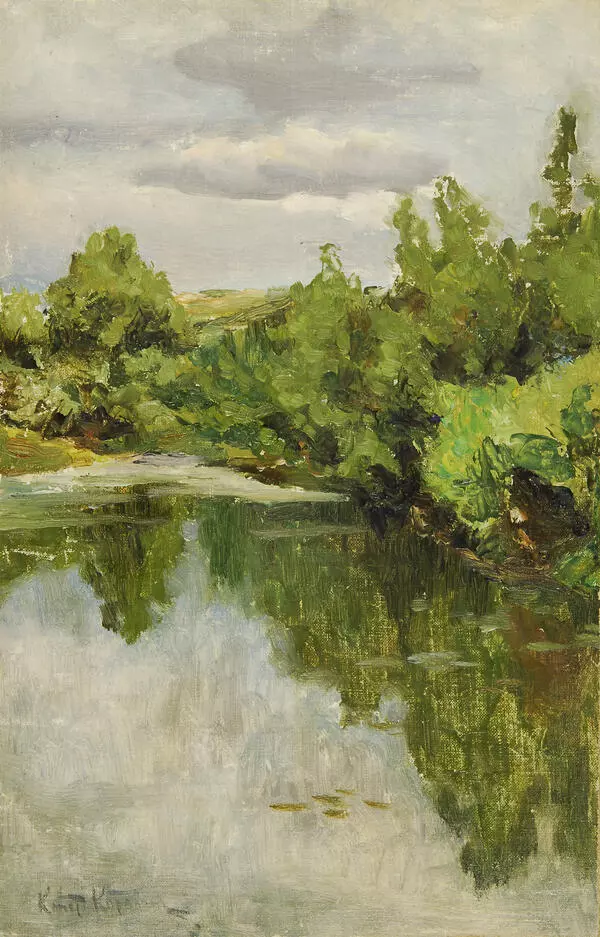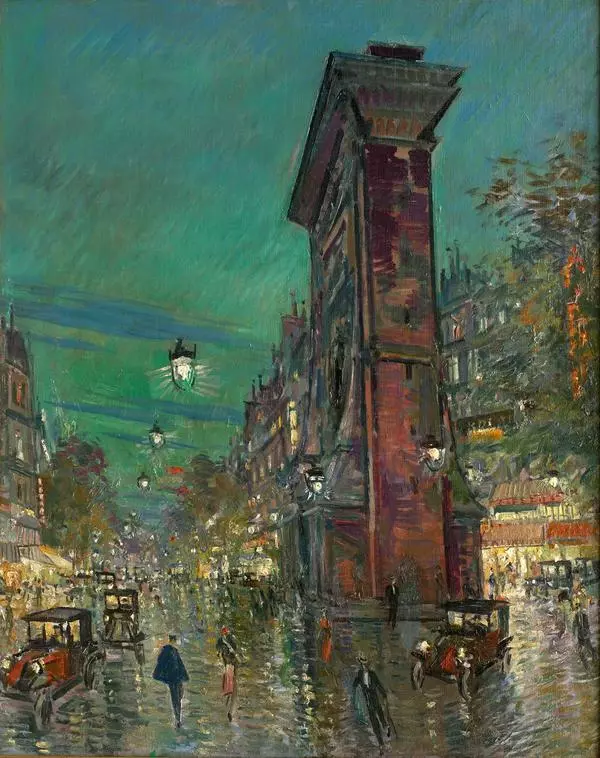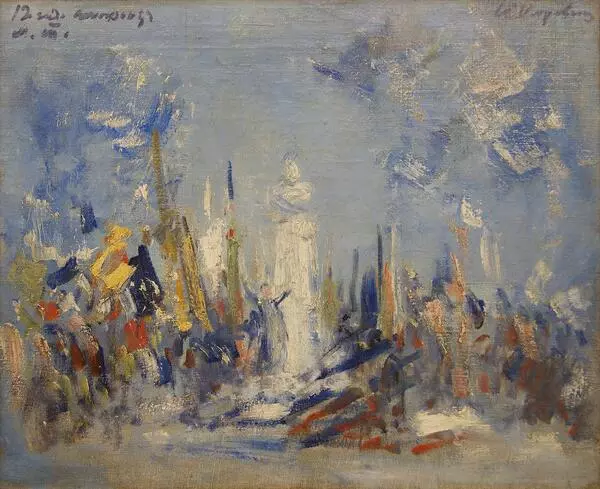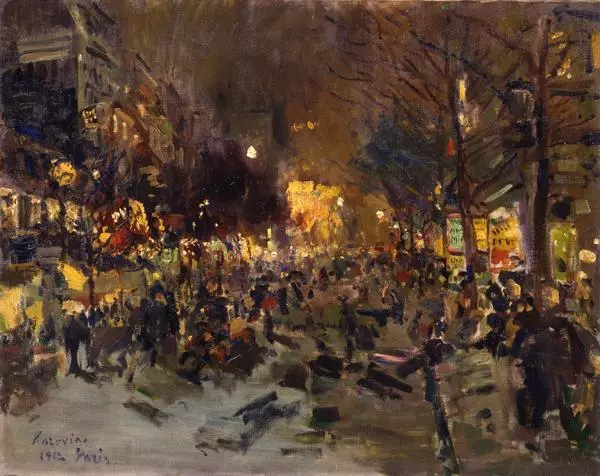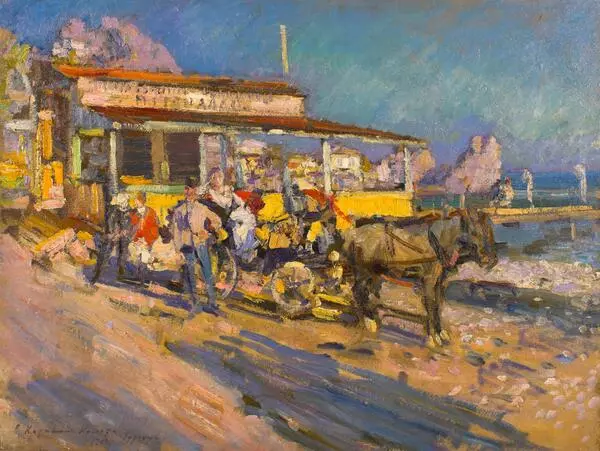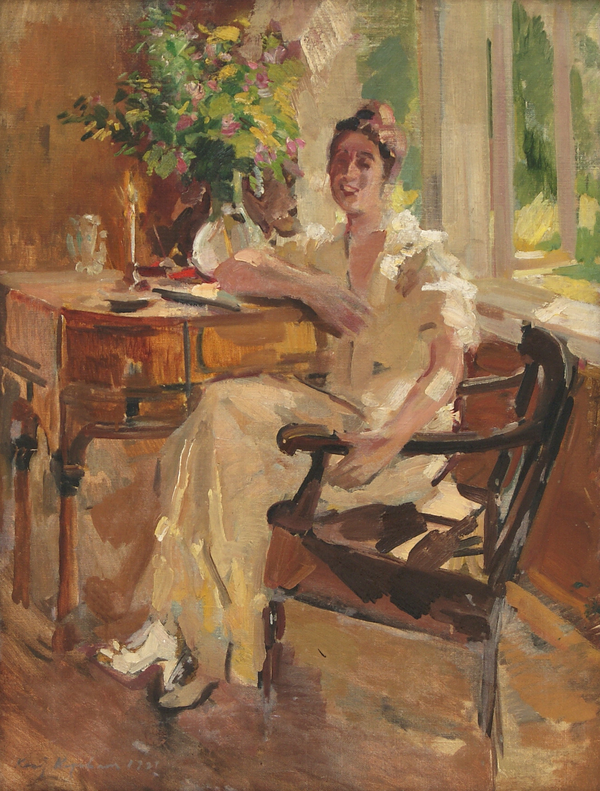Konstantin Korovin was born in 1861 in Moscow in a wealthy merchant family. At the age of 14, Korovin entered the architectural department at the Moscow School of Painting, Sculpture and Architecture. However, he soon transferred to the painting department to the landscape class of Alexey Savrasov. From the famous master of landscape, Korovin learned to convey the feeling of life through the colors of nature. Later, the young artist said that a landscape should not be painted only because it is beautiful, ‘it must have a history of the human soul.’
Due to a serious illness, Alexey Savrasov left the school. After his departure, Korovin entered the St. Petersburg Academy of Arts, but did not study there for a month: the young artist was oppressed by ‘conventionality and seriousness about the frivolous.’ He returned to the school and ended up in the workshop of Vasily Polenov, who headed the landscape class. Polenov introduced the students to the art of the Impressionists. This new artistic movement carried Korovin away. The conservative teachers of the school could not forgive Korovin for following the pictorial innovations. After graduation, he never received the title of class artist.
Paris occupied a special place in the work of Konstantin Korovin. The artist created many landscapes of the French capital such as ‘Paris. Seine’ (1902), and ‘The Parisian Boulevard “(1911) from the collection of The Vasnetsov Brothers Art Museum in Vyatka. Paris is a favorite model of many artists. First of all, looking at the Korovin boulevards, one recalls the paintings of the same name by Claude Monet and Camille Pissarro. A later work from the museum”s exposition is more expressive in color, in the movement of a brushstroke, and each landscape seems to be burning with its own light. It is no coincidence that the series in which this work was included is called “Paris Lights”.
“The Parisian Boulevard” seems to be created right on the pavement. The city spreads out before your eyes, as if in the palm of your hand, demonstrating a special compositional technique of all night depicted Paris views. Usually, Korovin paints night Paris in small multidirectional strokes, barely marking the outlines of objects and people. The color of the painting is dominated by dark gray, greenish, brown tones, and for contrast to them, yellow and red are used. In the process of creation, Korovin explained: “I like to start from the thickest, darkest places. This prevents you from getting into whiteness. The color will be rich and dense. "
Due to a serious illness, Alexey Savrasov left the school. After his departure, Korovin entered the St. Petersburg Academy of Arts, but did not study there for a month: the young artist was oppressed by ‘conventionality and seriousness about the frivolous.’ He returned to the school and ended up in the workshop of Vasily Polenov, who headed the landscape class. Polenov introduced the students to the art of the Impressionists. This new artistic movement carried Korovin away. The conservative teachers of the school could not forgive Korovin for following the pictorial innovations. After graduation, he never received the title of class artist.
Paris occupied a special place in the work of Konstantin Korovin. The artist created many landscapes of the French capital such as ‘Paris. Seine’ (1902), and ‘The Parisian Boulevard “(1911) from the collection of The Vasnetsov Brothers Art Museum in Vyatka. Paris is a favorite model of many artists. First of all, looking at the Korovin boulevards, one recalls the paintings of the same name by Claude Monet and Camille Pissarro. A later work from the museum”s exposition is more expressive in color, in the movement of a brushstroke, and each landscape seems to be burning with its own light. It is no coincidence that the series in which this work was included is called “Paris Lights”.
“The Parisian Boulevard” seems to be created right on the pavement. The city spreads out before your eyes, as if in the palm of your hand, demonstrating a special compositional technique of all night depicted Paris views. Usually, Korovin paints night Paris in small multidirectional strokes, barely marking the outlines of objects and people. The color of the painting is dominated by dark gray, greenish, brown tones, and for contrast to them, yellow and red are used. In the process of creation, Korovin explained: “I like to start from the thickest, darkest places. This prevents you from getting into whiteness. The color will be rich and dense. "
